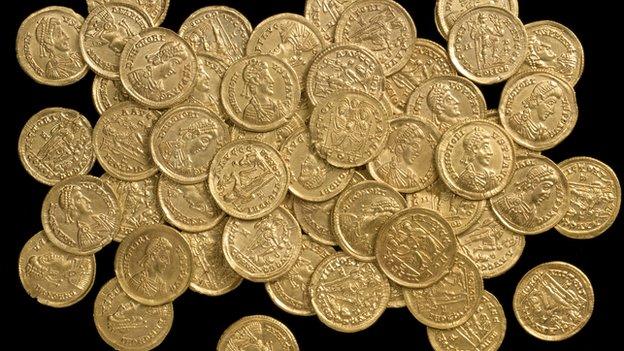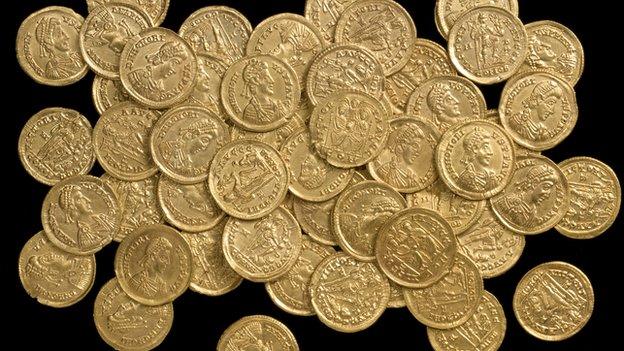St Albans Roman gold coin hoard found bought for £100,000
- Published

The stash - found on private land north of St Albans - is believed to be one of the largest Roman gold coin hoards discovered in the UK.
A hoard of Roman gold coins found in St Albans has been bought by one of the city's museums for nearly £100,000.
The stash was found by metal detector on private land in October 2012 by a man making his first survey.
The find is believed to be one of the largest Roman gold coin hoards buried in the UK.
The 159 coins date from the final years of Roman rule in Britain in the 4th Century and will go on display at Verulamium Museum from mid-September.
David Thorold, a curator at the museum, said: "Evidence suggests the coins were originally part of a hoard that had been disturbed at some point during the last couple of hundred years.
"During the Roman occupation of Britain, people buried coins for two reasons - either as a sacrifice to their gods or as a form of secure storage, with the aim of later recovery."
Anonymous benefactor
He said gold coins, known as solidi, were extremely valuable and not traded or exchanged on a regular basis.
Instead they were used for large transactions.
The coins, discovered by Westley Carrington during his first metal-detecting outing, were scattered across a wide area.
They were mostly struck in the Italian cities of Milan and Ravenna and issued under the Emperors Gratian, Valentinian, Theodosius, Arcadius and Honorius.
Richard Shwe, from St Albans City and District Council, said it had purchased the coins, found in the north of the city, with support from the Heritage Lottery Fund, St Albans Museums and Galleries Trust and an overseas benefactor, who wished to remain anonymous.
An inquest in July 2013 declared the hoard treasure, giving the museum the right to acquire them, and the value was decided by an independent committee at the British Museum.
- Published6 June 2013

- Published16 October 2012
